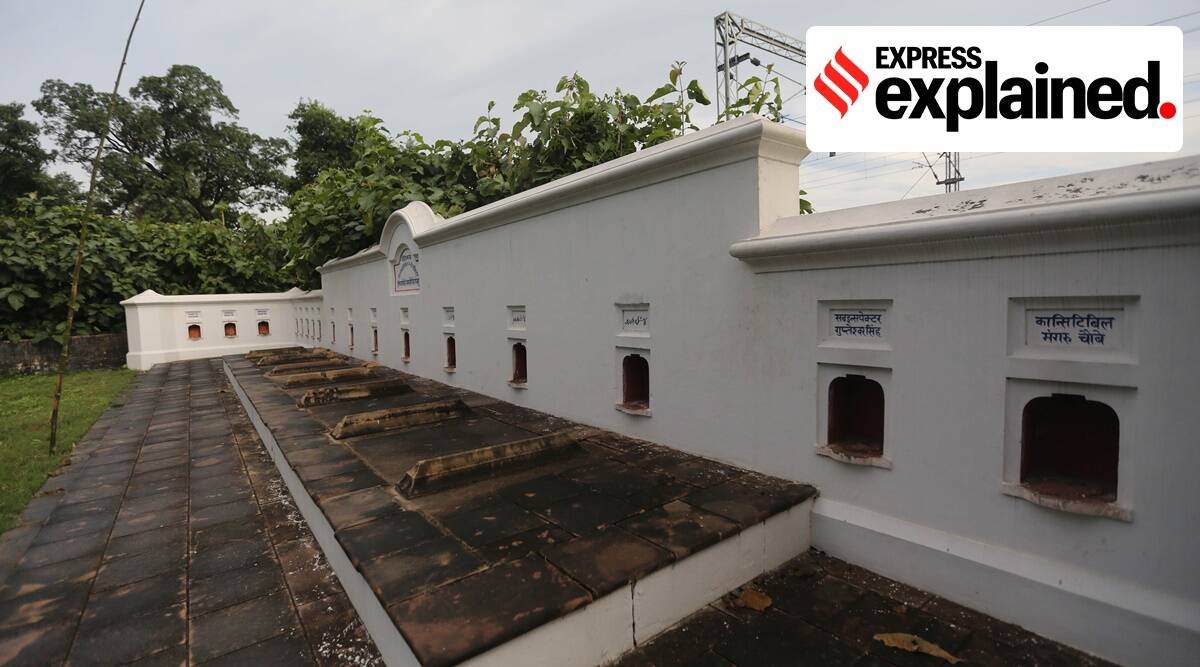The town of Chauri Chaura was the scene of a violent incident with far-reaching consequences during the freedom struggle a century ago.
On Thursday, Prime Minister Narendra Modi will inaugurate the Chauri Chaura Centenary Celebrations by video link, and will release a postage stamp to mark the centenary of the event. The UP government has planned a year of celebrations through February 4, 2022 in all 75 districts of the state.
The incident
On February 4, 1922, a large crowd of peasants set on fire the police station in Chauri Chaura, killing 22 policemen. According to Shahid Amin’s Event, Metaphor, Memory: Chauri Chaura, 1922-1992, the best known historical reconstruction of the incident and its aftermath, this is what happened:
On August 1, 1920, Gandhi had launched the Non-Cooperation (Asahayog) Movement against the government, which involved a boycott of foreign goods, especially machine-made cloth, and legal, educational and administrative institutions, “refusing to assist a ruler who misrules”. As the movement gathered momentum over the next year and a half, large numbers of volunteers became active across the country.
In the winter of 1921-22, volunteers of the Congress and the Khilafat movement were organized into a national volunteer corps. In mid-January 1922, after a meeting addressed by a functionary of the Gorakhpur Congress and Khilafat Committees, peasant “officers” were appointed to fill out pledges of non-cooperation, collect subscriptions, and lead the picketing of shops selling foreign items. A few days before the February 4 incident, police cracked down on volunteers who were trying to stop trade in foreign cloth, and enforce a just price for meat and fish, and severely beat up one Bhagwan Ahir, a demobilized soldier from the British Indian Army.
On February 4, volunteers congregated in the town, and after a meeting, proceeded in a procession to the local police station, and to picket the nearby Mundera bazaar. They ignored warning shots fired in the air by police — “‘bullets have turned into water by the grace of Gandhiji’ was the construction put by the crowd”, Amin wrote — and pelted the police with stones. The police fired into the crowd, killing three people and injuring many others. A volcano of anger then erupted, there was heavy brick batting, and the policemen were forced to flee inside the thane. The crowd proceeded to douse the building with kerosene and to set it on fire.
Some of the policemen who tried to escape were caught and battered to death, some others managed to escape by throwing away their conspicuous red turbans, which the angry crowd tore to shreds. A lot of police property, including weapons, was destroyed. The volunteers saw the “abolition of the thane” as a sign of the arrival of “Gandhi raj”.
The fallout
The severely rattled establishment of the Raj prosecuted the accused aggressively. Raids and repression followed immediately, lists of volunteers were compiled, and large numbers of suspects were rounded up. A sessions court quickly sentenced as many as 172 of the 225 accused to death. Ultimately, 19 of those convicted were sent to the gallows.
Gandhi, who was deeply disturbed by the incident, condemned the “crime” of the policemen’s killing. The volunteer groups in the nearby villages were disbanded, and a Chauri Chaura Support Fund was set up to demonstrate “genuine sympathy” and seek prayashchit (atonement). Gandhi decided to stop the Non-Cooperation Movement, which he saw as having been tainted by unforgivable violence. He bent the Congress Working Committee to his will, and on February 12, 1922, the satyagraha was formally suspended.
The churn
In his An Autobiography, first published in 1936, Jawaharlal Nehru wrote how he and other leaders of the national movement, then in prison, had heard “to our amazement and consternation, that Gandhiji had stopped the aggressive aspects of our struggle, that he had suspended civil resistance…when we seemed to be consolidating our position”. This made them “angry”, Nehru wrote, “but our disappointment and anger in prison could do little good to any one”. Other leaders like Motilal Nehru, C R Das, and Subhas Bose too, recorded their bewilderment at Gandhi’s decision.
The Mahatma on his part, justified himself on grounds of his unshakeable faith in non-violence: “I would suffer every humiliation, every torture, absolute ostracism and death itself to prevent the movement from becoming violent.” (Young India, February 16, 1922, quoted in Sumit Sarkar, Modern India: 1885-1947) Historians such as Bipan Chandra have argued that Gandhi’s strategy of non-violence was based on the premise that the use of repressive force against non-violent protesters would expose and weaken the semi-hegemonic character of the colonial state, and incidents such as Chauri Chaura defeated that strategy; also, that “withdrawal or shift to a phase of non-confrontation is an inherent part of a strategy of political action that is based on the masses… (It) is not tantamount to betrayal; it is an inevitable part of the strategy itself”. (Bipan Chandra et. al, India’s Struggle For Independence)
The disillusionment resulting from the suspension of the Non-Cooperation Movement nudged many of the younger Indian nationalists towards the conclusion that India would not be able to throw off the colonial yoke through non-violence. It was from the ranks of these impatient patriots that some of India’s most beloved revolutionaries were to arise in the years to come — Jogesh Chatterjee, Ramprasad Bismil, Sachin Sanyal, Ashfaqulla Khan, Jatin Das, Bhagat Singh, Bhagwati Charon Vohra, Masterda Surya Sen, and many others.





